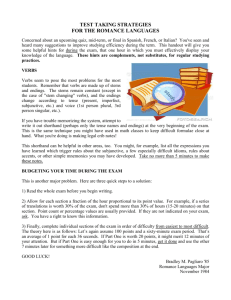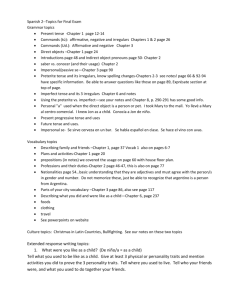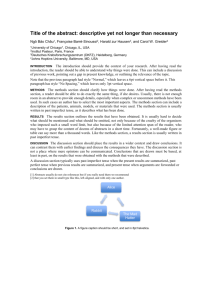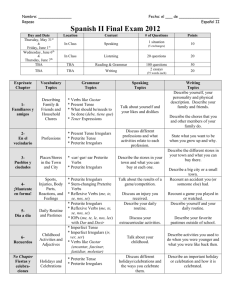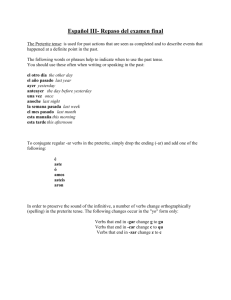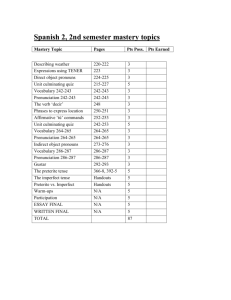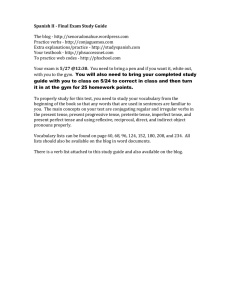Future Tense
advertisement
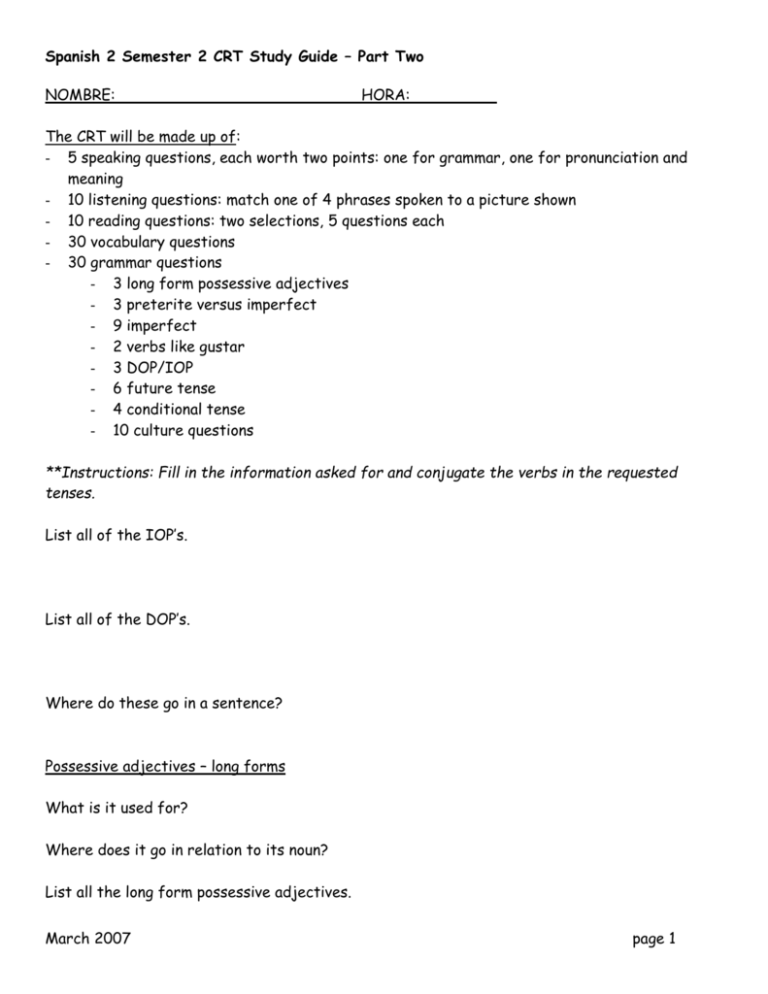
Spanish 2 Semester 2 CRT Study Guide – Part Two NOMBRE: HORA: The CRT will be made up of: - 5 speaking questions, each worth two points: one for grammar, one for pronunciation and meaning - 10 listening questions: match one of 4 phrases spoken to a picture shown - 10 reading questions: two selections, 5 questions each - 30 vocabulary questions - 30 grammar questions - 3 long form possessive adjectives - 3 preterite versus imperfect - 9 imperfect - 2 verbs like gustar - 3 DOP/IOP - 6 future tense - 4 conditional tense - 10 culture questions **Instructions: Fill in the information asked for and conjugate the verbs in the requested tenses. List all of the IOP’s. List all of the DOP’s. Where do these go in a sentence? Possessive adjectives – long forms What is it used for? Where does it go in relation to its noun? List all the long form possessive adjectives. March 2007 page 1 Spanish 2 Semester 2 CRT Study Guide – Part Two Preterite vs. Imperfect List the time cues for the preterite. List the time cues for the imperfect. Write down which tense you would use for each time cue. La semana pasada: Todos los días: Siempre: Verbs like Gustar How are these conjugated? The IOP indicates: The two verb endings are: - the verb ending is determined by: Translate these sentences using verbs like gustar. They like musicals. Grandma loves soap operas. Imperfect Tense What is it used for? How is it made? What are the endings? What are the irregulars? March 2007 page 2 Spanish 2 Semester 2 CRT Study Guide – Part Two Conjugate these verbs in the imperfect tense. Sentirse Preocuparse Dormir Cantar Ser Pelearse Tener Enojarse Trepar Future Tense How is it made? What are the endings? What are the irregulars? Conjugate these verbs in the future tense: Hacer Ir Tener Trabajar Descubrir Viajar Conditional Tense What is it used for? How is it made? March 2007 page 3 Spanish 2 Semester 2 CRT Study Guide – Part Two What are the endings? List the irregulars. Conjugate these verbs in the conditional: Hacer Ir Tener Venir Culture: The answers to these questions can be found in your text in the chapter readings or the cultural notes throughout the chapters. What are some common toys in Mexico? What is the name of the famous park in Mexico City? What goes in piñatas? Name a famous Mexican muralist. How do women greet each other in Costa Rica? What nationality does “tico” refer to? When do Mexicans eat the biggest meal of the day? How does baile folklórico vary from region to region? What is sometimes used in Costa Rica instead of “tú?” (and it’s NOT usted!) What are Costa Rica’s main imports? March 2007 page 4




